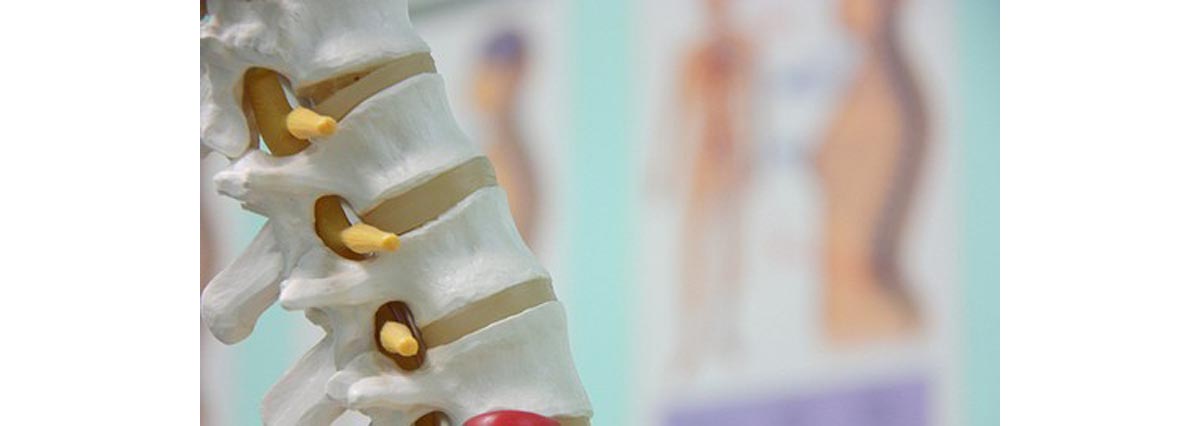Table of Contents
Herniated, slipped or bulging discs are all common names for the same painful back injury. If you've suffered a herniated disc, you've likely spoken with a physician about a rest and recovery plan. Typically, corrective surgery is not recommended to people who have suffered a herniated disc, unless it is a chronic health problem. The most common and corrective remedy for a herniated disc is to improve the state of the structures surrounding the herniation to prevent it from occurring again.

In between the vertebrae of the spine, there is a squishy membrane, called a disc. Think of the disc as a jelly donut that rests between each of the bones of the spine to protect them. As the name suggests, a stress can cause the disc to bulge, slip or herniate out of place, usually slipping in a posterior direction (backwards).
The first part of the treatment for herniated discs is to reduce inflammation, which reduces pain. Your doctor may prescribe anti-inflamatory medications or muscle relaxants to make this possible. Once the pain is reduced, your mobility will remain limited, and you'll feel nervous to move in certain ways in case it triggers more pain. Once a disc slips, the herniation may become more likely to occur again.
Taking all these factors into consideration, a full and complete recovery from a herniated disc requires determination and hard work. No slacking out on your rehab!
How to Fix A Slipped Disc
Its not so much a question of how to fix a slipped or herniated disc as it is a question of reinforcing the areas around the injury site which help to correct the problem. Connecting the vertebrae are several tiny postural muscles. These should be strengthened and engaged at all times to avoid a recurring problem area.
Be aware of your limits
Strengthening these muscles should be done carefully and with full body awareness. Only you will truly know your limits, so listen to your body, and pay attention to what hurts, what feels weak, and know when to stop. Rather than taking advice from a friend who went trough a similar condition, seek the advice and assistance of professionals who can evaluate you and ensure that you are exercising correctly. Before beginning your strengthening regime, always get the green light from your physician or therapist. If you have the chance to exercise under supervision, do so.
Work the postural muscles
The postural muscles are the muscles that help keep you upright, and they include the abdominals, the intraspinatus (from one vertebrae to the next), supraspinatus, and serratus sections of muscle. These muscles vary in size and in specific function, but they all work together to create movements that we rarely give much thought to. These muscles are at work when we walk, stand, sit, reach and other basic movements. If one is not functioning well, something could easily go wrong in the area (including a herniated disc!!).
- “Corrective Exercise for Herniated Disc” By Rick Kaselj. Published November 2011. Accessed January 2012. Retrieved from: exercisesforinjuries.com/corrective-exercises-for-herniated-disc/
- Photo courtesy of chiropractic on Flickr: www.flickr.com/photos/chiropractic/3812188391

